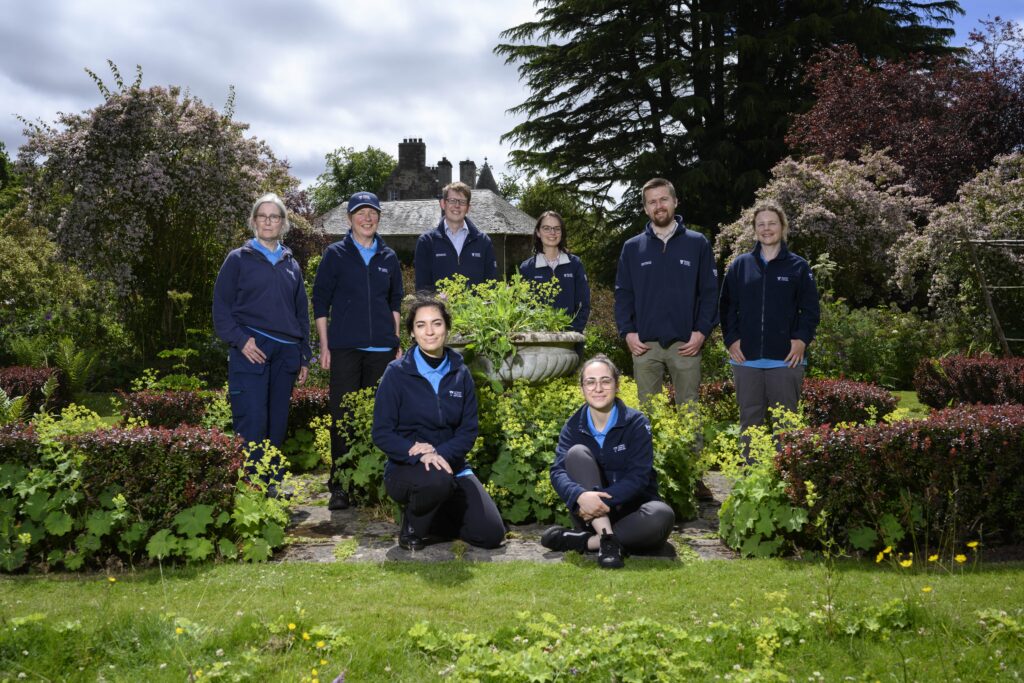THE NATIONAL Trust for Scotland has completed the second phase of its three-year project to document the plants across its 39 major gardens.
The three-year PLANTS project has so far identified over 60,000 plantings since the project began in 2022.
Auditing 32,420 plantings across Scotland this year, the National Trust for Scotland has found a rare Rhododendron arboretum subsp. zeylanicum planted before World War I.

Understanding each plant will enhance the charity’s ability to manage the risks of plant disease, severe weather and storm damage as well as the growing impact of the climate and biodiversity crisis.
This second year of the project has focused predominantly on the west, north and east of Scotland which all yield a variety of plant life across the country’s microclimates.
Amongst this year’s highlights were the team’s findings at Arduaine, a 20-acre coastal garden in Argyll that was created in 1898 by tea planter James Arthur Campbell, overlooking the Sound of Jura.
This year alone, the PLANTS team have audited over 5,000 plantings at Arduaine and given its renowned and extensive collections of rhododendrons, it is no surprise that the team made astonishing findings.
A Rhododendron arboretum subsp. zeylanicum dating from circa 1890 was recorded and is potentially one of the largest in the British Isles.
James Arthur Campbell used his tea planting connections to secure this seed and it’s rumoured to have come to Arduaine hidden in a chest of tea.
Additionally, the team recorded a Wheel-Tree (Trochodendron aralioides), towering nearly 60ft high.
The north of Scotland’s Leith Hall is home to an iconic rock garden designed by the last Laird of Leith Hall, Charles Leith-Hay in the 1920s.
The team auditing the property found Rhodohypoxis ‘Great Scot’ in the gardens, a South African bulb which has intense deep red-pink flowers.
Leith Hall’s rock garden grants visitors a window into the past to see the garden as it was once imagined by Charles Leith-Hay.
Preserved by the National Trust for Scotland, the design of the rock garden remains the same today so that the beauty and heritage of Charles Leith-Hay’s vision can be enjoyed by all.
At Inveresk Lodge Garden, near Edinburgh, the PLANTS team identified a slew of unusual plants from Chocolate Vines (Akebia quinate) to Ovens Wattle (Acacia pravissima), a plant common to New South Wales in Australia.
The plant thrives in hot and dry conditions but can now be found flourishing in this beautiful Musselburgh garden despite Scotland’s colder climate.
The PLANTS project is led by Dr Anna Florence, National Trust for Scotland Curator of Plant Collections, and Dr Colin McDowall, PLANTS Project Manager, alongside a team of experts, and aims to identify and record the plants in the Trust’s 39 major gardens.
Dr Anna Florence, Curator of Plant Collections for the National Trust for Scotland, said: “The PLANTS project has been a meticulous yet massively rewarding experience for the Trust as a whole.
“This year we have made some remarkable findings across our gardens that give a glimpse into the lives of those that originally designed them.
“Beyond finding plantings that were never on record before, the project enables us to gain a greater understanding of the original plantings and how we can best protect them and let them flourish for the future.
“We’re excited as we look toward the final year of the project and the opportunity to share more data, learning and stories about Scotland’s rich horticultural heritage.”
Stuart Brooks, Director of Conservation & Policy at the National Trust for Scotland, said: “The PLANTS project marks another major milestone in our commitment to protecting the rich biodiversity, heritage and stories that make our charity’s gardens and designed landscapes so important.
“This ambitious project is helping us understand better what is in our gardens, and therefore how we can keep them resilient, valued and accessible to more people, helping to secure their longer-term future and that of the plants that live in them.”
“We are hugely grateful to our PLANTS team for making outstanding progress on such a large-scale project, and to our supporters and members who make these critically important projects possible.”
The PLANTS project is one of many initiatives led by the Trust as part of its ten-year strategy, Nature, Beauty & Heritage for Everyone, with a mission to conserve Scotland’s heritage and the stories that each of its gardens hold.
For each of the thousands of plants examined thus far, the PLANTS team have recorded the genus, species or cultivar of the planting to match previous archived records. The teams will now spend the winter months inputting the recorded data.
For more information on the National Trust for Scotland’s PLANTS project, please visit: www.nts.org.uk.